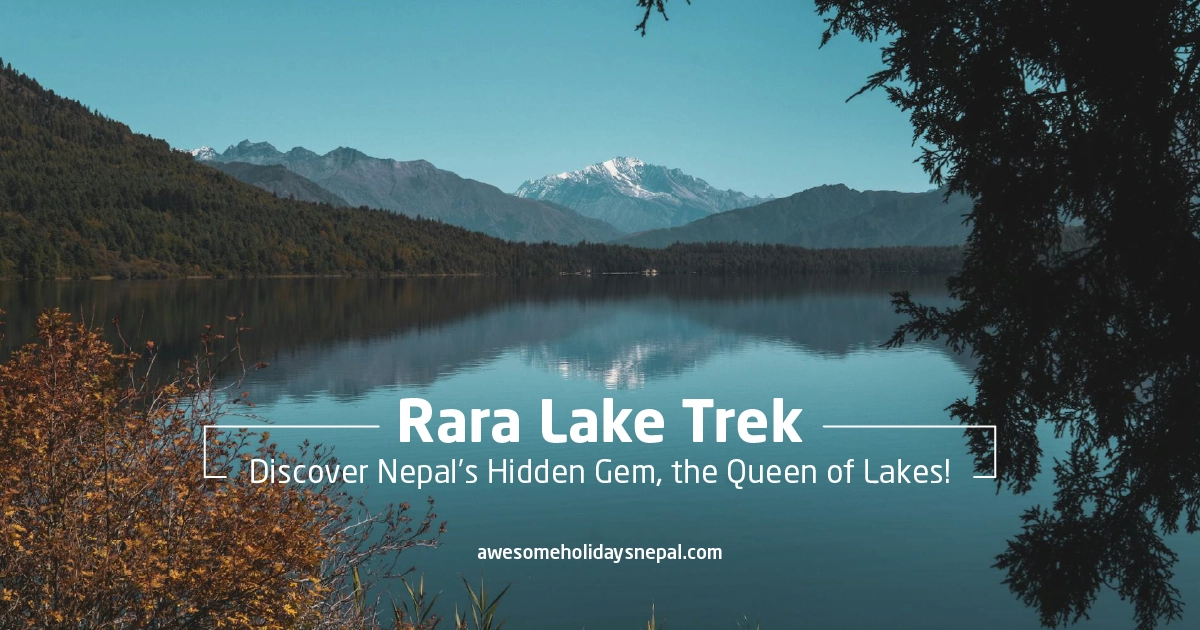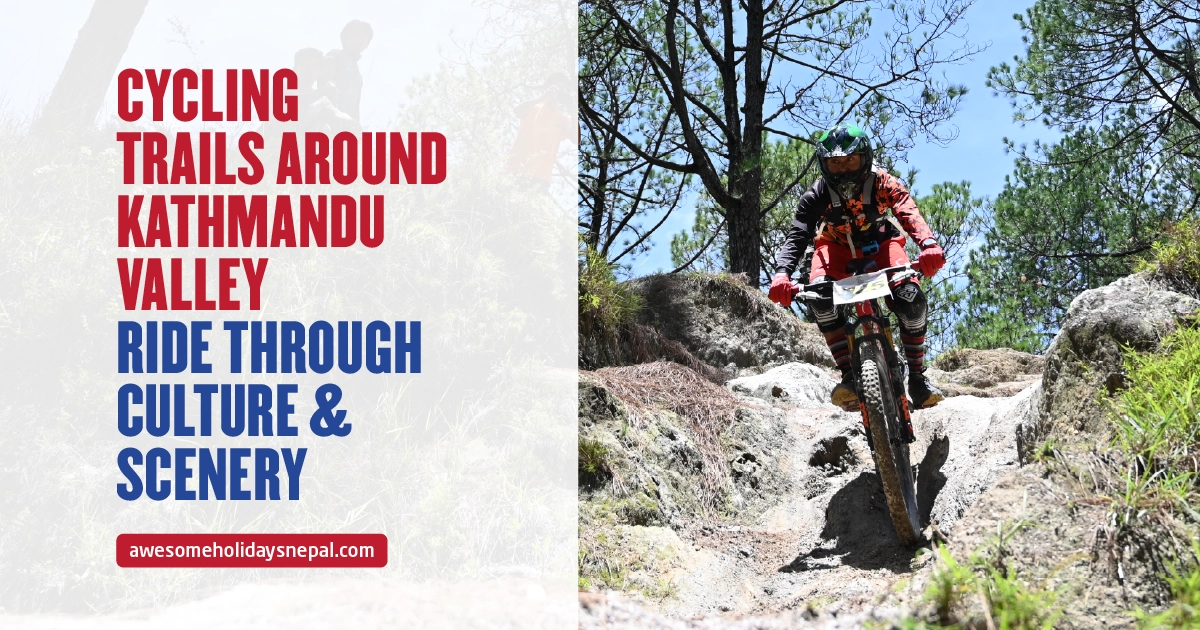Annapurna Trek Vs Manaslu Trek: Which is better for You?

Nepal is home to some of the world’s most breathtaking trekking routes, and two of the most popular choices among trekkers are the Annapurna Trek and the Manaslu Trek.
While both offer stunning Himalayan landscapes and cultural experiences, they differ in difficulty, accessibility, trekking experience, and overall adventure. If you are wondering which trek is best for you, this detailed comparison will help you decide.
Let’s head on to decide this battle for an ideal trek destination!
Annapurna Trek Vs Manaslu Trek: Which is better for You?
Trek Duration, Altitude, and Difficulty
ABC Trek generally takes 14 days and is considered a moderate trek. The highest altitude reached is 4,130m (13,550ft) at the Annapurna Base Camp. The trek involves steady ascents and descents, with well-established trails and teahouse accommodations. It suits trekkers with a reasonable fitness level and some prior hiking experience.
Manaslu Trek requires 16 days and is categorized as a challenging trek. The highest point is 5,160m at Larkya La (Pass). The difficulty level of this trek goes from moderate to challenging. The trek is more demanding due to its remote nature, longer duration, and higher altitude. Handling the high-altitude sections requires good physical fitness, prior trekking experience, and acclimatization.
In summary, the Annapurna Trek is shorter, lower in altitude, and less demanding, making it ideal for beginners or those with limited time. On the other hand, the Manaslu Trek is a longer, higher-altitude, and more challenging adventure, best suited for experienced trekkers seeking a remote and rugged experience.
If you are short on time and looking for a moderate trek, ABC is a better option. However, if you prefer a longer, more remote, and more challenging adventure, Manaslu Trek is ideal.
Scenery and Landscapes
The Annapurna Base Camp (ABC) trek offers a mesmerizing journey through some of Nepal’s most diverse and stunning landscapes. Starting in the lush, green foothills of Nepal, the trek takes you through a breathtaking variety of landscapes. The journey begins with terraced farmlands, traditional villages, and dense rhododendron and bamboo forests, alive with the sounds of rivers and waterfalls.
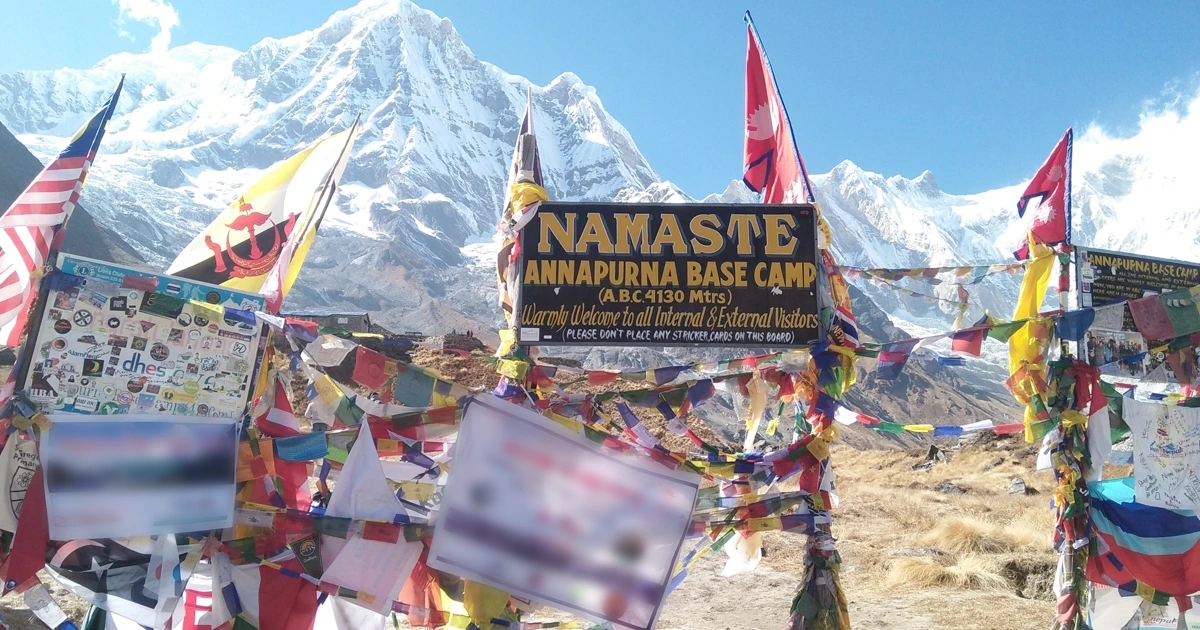
The vibrant alpine meadows and grazing pastures, dotted with wildflowers in spring, provide a striking contrast to the rugged mountain backdrop.
As you ascend higher, the landscape transforms into a more rugged and glacial environment. The dense forests give way to rocky moraines, high-altitude deserts, and glacial debris, leading to the awe-inspiring amphitheater of Annapurna Base Camp.
The dramatic play of light during sunrise and sunset over majestic peaks like Annapurna-I (8,091m), Annapurna South, Machapuchare (6,993m), and Hiunchuli (6,441m) creates a magical atmosphere. This combination of lush valleys, dramatic gorges, alpine meadows, and glacial landscapes makes the Annapurna trek a visually stunning and unforgettable experience.
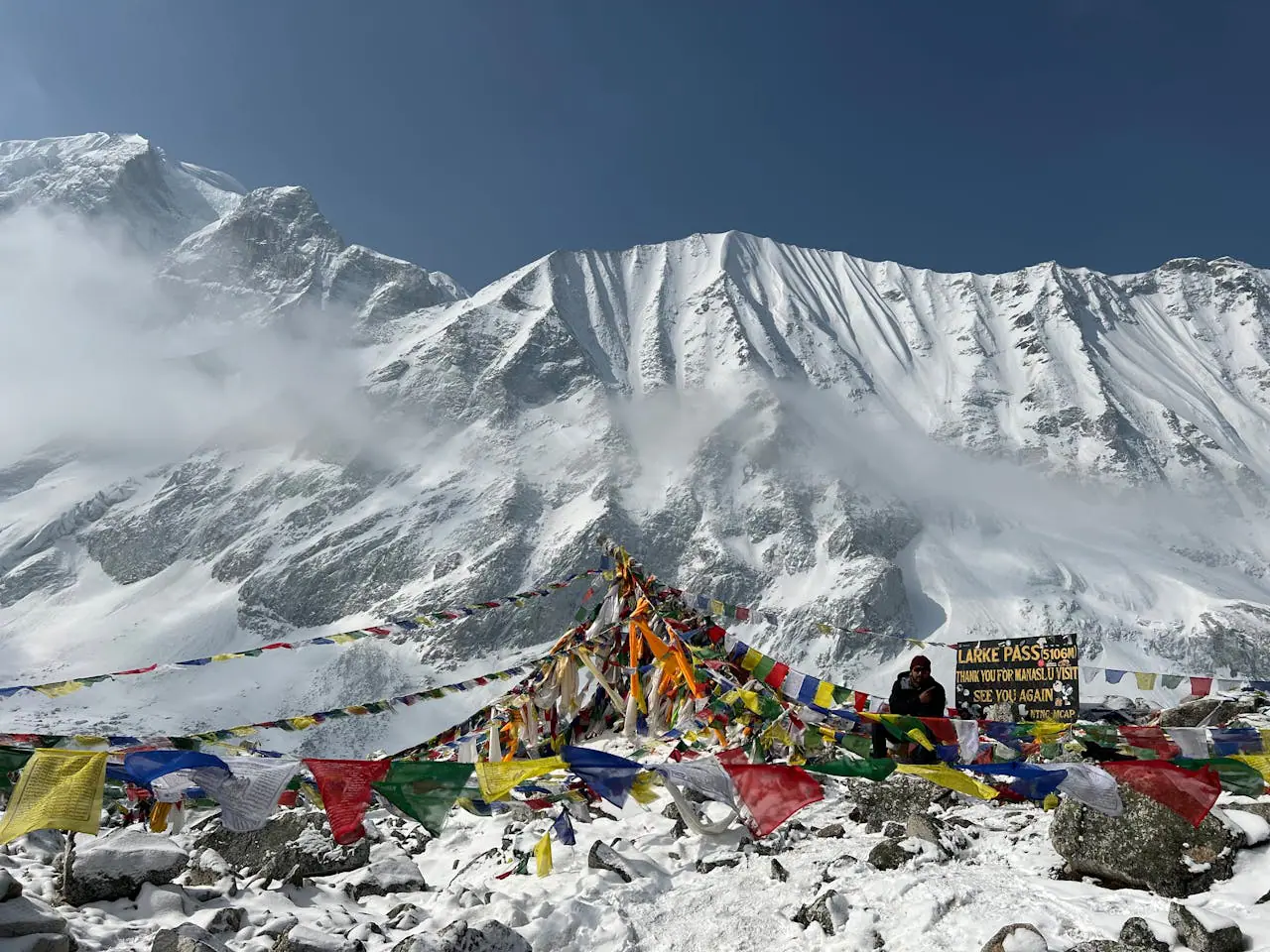
On the other hand, Manaslu Trek offers a secluded and rugged environment with awe-inspiring views of Manaslu (8,163m), the eighth-highest peak in the world, along with stunning glacial valleys.
Manaslu Trail showcases a diverse and pristine landscape. The trek begins in dense subalpine forests, following the Budhi Gandaki River through steep gorges and past cascading waterfalls. As you ascend, the scenery transitions to alpine meadows, high-altitude deserts, and expansive ice fields. Along the way, you’ll enjoy breathtaking views of Mt. Annapurna II, Himalchuli, Ganesh Himal, and Manaslu. A highlight of the trek is the Larkya La Pass (5,160m), one of Nepal’s most remarkable high-altitude crossings. Unlike the Everest region, the Manaslu area boasts richer vegetation and a variety of terrains, making it a paradise for nature enthusiasts.
Both treks are visually spectacular, but the Annapurna trek is more accessible with varied landscapes, while the Manaslu provides a wilder, untouched experience.
Cultural Experience
The Annapurna trek offers rich cultural and local experiences as you pass through traditional Gurung and Magar villages, where you can immerse yourself in the warm hospitality and vibrant mix of traditional Nepali culture and modern amenities.
Along the trail, you’ll encounter terraced farmlands, stone houses adorned with prayer flags, and ancient Buddhist monasteries of Chhomrong, providing a glimpse into the region’s spiritual and agricultural lifestyle.
The blend of natural beauty and cultural richness makes the trek not only a visual delight but also a deeply enriching journey into the heart of Nepalese mountain life.
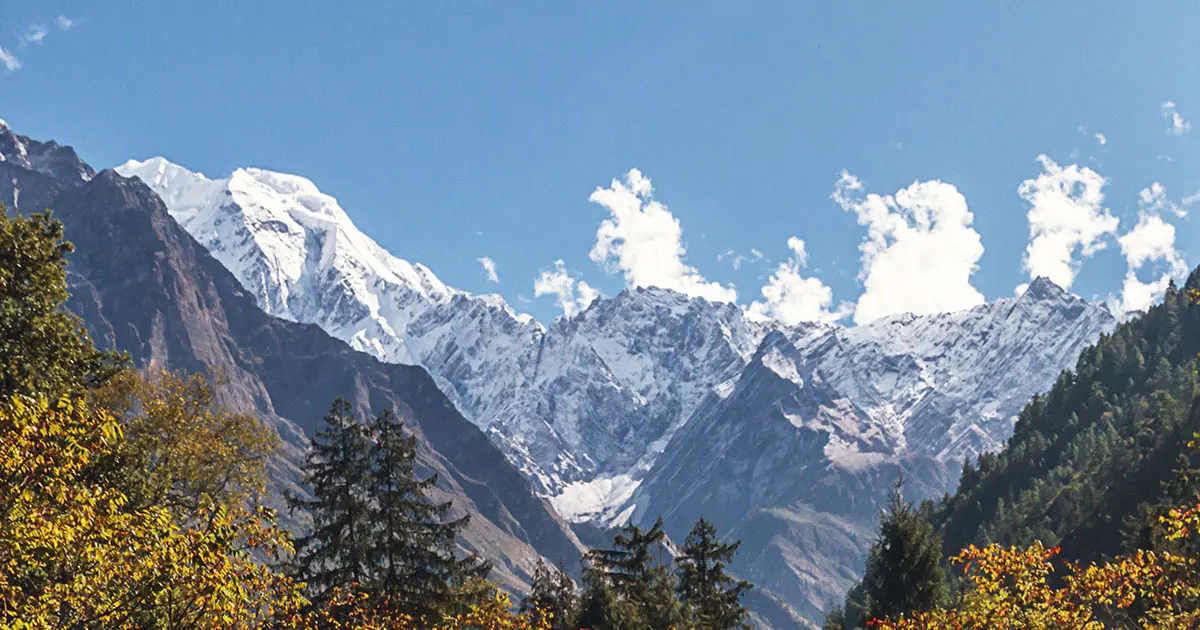
On the other hand, the Manaslu region is culturally Tibetan-influenced, with Buddhist monasteries, mani walls, and ancient villages offering a deeper sense of isolation and heritage. The area is home to aboriginal groups like the Nubri and Tsum. Samagaon and Lho are small villages with ancient stone carved mani walls, yak herds, and monasteries that reflect the Tibetan culture.
The lower number of tourists in Manaslu results in authentic, traditional, and Tibetan-style experiences and immersive cultural interactions, while ABC offers a mix of modern and cultural trekking experiences.
Accommodation and Food
The Annapurna Trek and Manaslu Treks offer distinct experiences in terms of accommodation and food, reflecting their differing levels of popularity and remoteness.
On the Annapurna trek, accommodation is more developed and widely available, with well-established teahouses and lodges along the route. These teahouses provide basic but comfortable rooms, often with shared bathrooms, and some even offer amenities like hot showers and Wi-Fi (usually at an extra cost). The food options are diverse, with menus featuring a mix of traditional Nepali dishes like dal bhat (lentils and rice), as well as international cuisines such as pasta, pizza, and pancakes. Due to the trek’s popularity, the teahouses are well-equipped to cater to a variety of dietary preferences.

In contrast, the Manaslu trek is more remote and less commercialized, offering a more rustic experience. Accommodation is primarily in basic wooden teahouses or homestays with fewer amenities and simpler facilities
The food options are also more limited, with a focus on traditional Nepali meals like dal bhat, as well as simple snacks like noodles and porridge. Due to the trek’s restricted nature, supplies are often carried in by porters, making meals less varied but still hearty and nourishing. Electricity stretches thin and charging appliances carries additional cost.
The Annapurna trek provides more comfortable and varied accommodation and food options, while the Manaslu trek offers a more authentic and rustic experience, reflecting its remote and less-traveled nature.
Both treks, however, ensure that trekkers are well-fed and rested after a day of adventure.
Click here to read the blog on Everything You Need to Know Before the Manaslu Circuit Trek.
Permit and Accessibility
For Annapurna Base Camp trekking, trekkers must get an Annapurna Conservation Area Permit (ACAP) and Trekkers’ Information Management System (TIMS) card.
Similarly, for the Manaslu Trek, trekkers need to acquire additional permits as Manaslu comes under a restricted area in Nepal. You need to get a Manaslu Restricted Area Permit (a minimum of two trekkers with a guide is mandatory), Annapurna Conservation Area Permit (ACAP), and Manaslu Conservation Area Permit (MCAP).
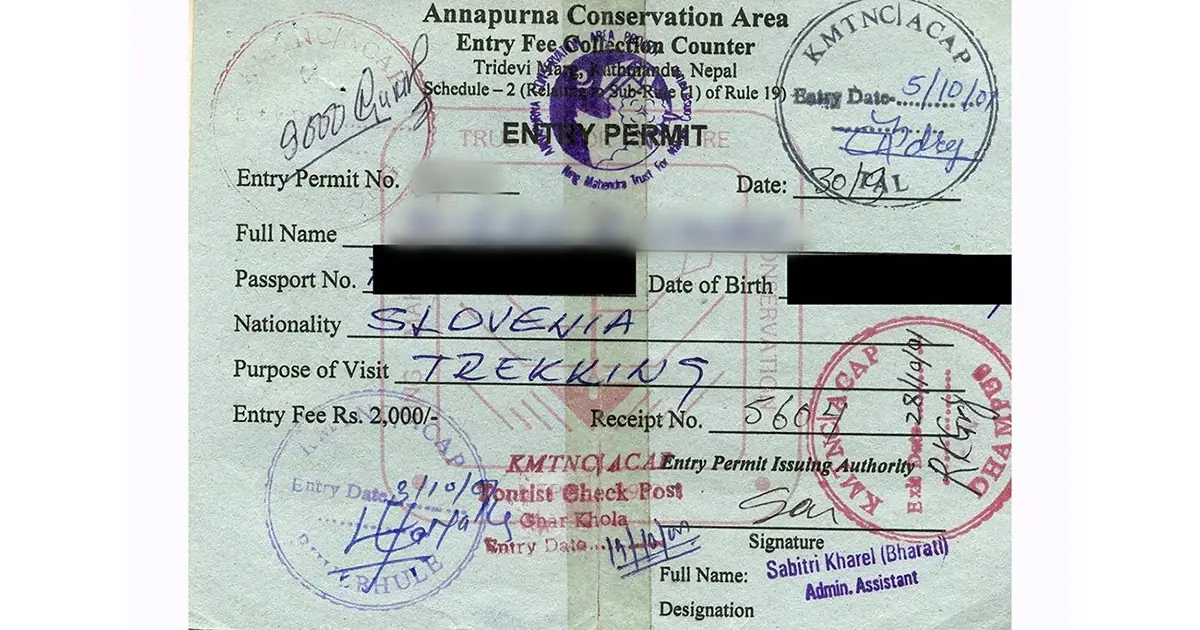
ABC is more accessible and does not require a guide, while Manaslu has permit restrictions and requires a guide, making it more regulated.
Crowd During the Trekking Seasons
Annapurna Base Camp is more popular and crowded, especially during peak seasons (spring and autumn). As ABC is comparatively easier, more people tend to go there.
Manaslu Base Camp, in contrast, is less crowded and remote, ideal for those seeking solitude and fewer trekkers on the trail. If you prefer a social trekking experience, go for ABC. If you want an off-the-beaten-path adventure, choose Manaslu.
Which One is Costlier?
The Manaslu Base Camp trek is more expensive, costing around USD 900–1,500, due to permits, guide requirements, and limited facilities. The Annapurna Trek is more budget-friendly, costing USD 500–900 per person depending on itinerary, guide, and services.

If you’re on a tight budget, Annapurna is slightly cheaper, as well as comfortable and accessible.
Wildlife and Flora
The Annapurna Base Camp (ABC) and Manaslu treks offer distinct experiences in terms of flora and fauna, shaped by their unique geographical and climatic conditions.
The Annapurna region is renowned for its rich biodiversity, particularly in the lower elevations, where dense rhododendron, oak, and bamboo forests thrive. These forests are home to a variety of wildlife, including langur monkeys, Himalayan thars, and numerous bird species like pheasants and eagles. As you ascend, the landscape transitions to alpine meadows and high-altitude deserts, where vegetation becomes sparse, but the views of towering peaks and glacial valleys are unparalleled.
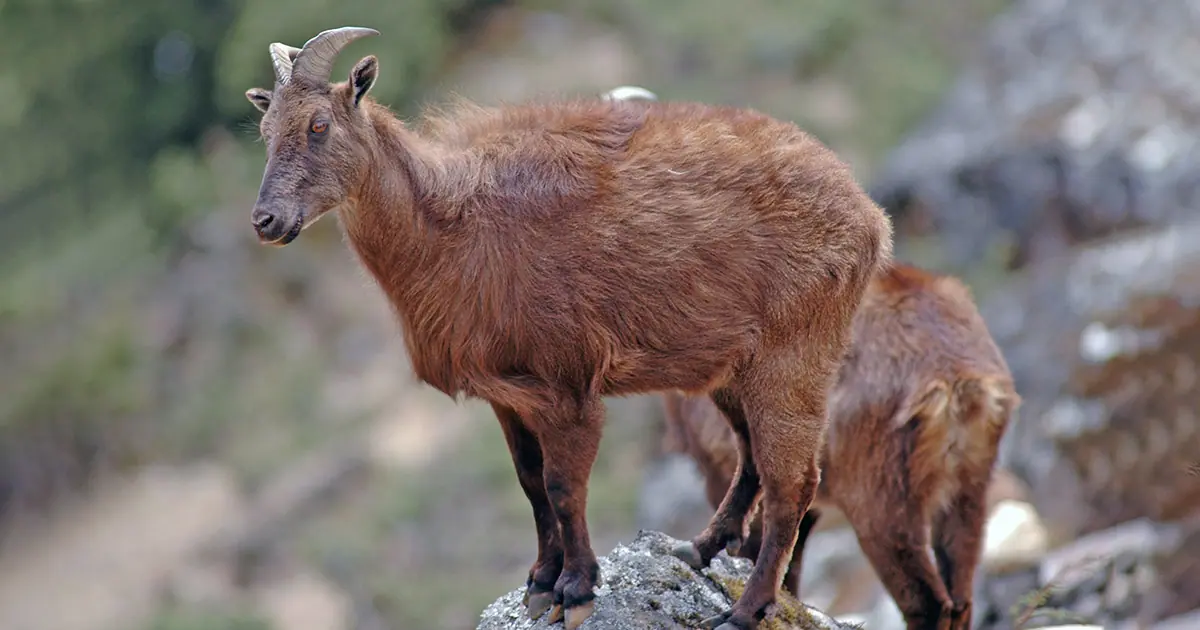
In contrast, the Manaslu region is more remote and less explored, offering a more pristine and varied ecosystem. The trek begins in subtropical forests, gradually giving way to pine and juniper forests, and finally to alpine zones. The area is rich in flora, including rare medicinal plants and vibrant wildflowers.
Manaslu’s fauna is equally diverse, with chances of spotting elusive species like the snow leopard, Himalayan musk deer, blue sheep, and red pandas. The region’s restricted status has helped preserve its natural habitats, making it a haven for wildlife enthusiasts.
While both treks showcase Nepal’s stunning biodiversity, Manaslu’s untouched landscapes and unique species provide a more exclusive and adventurous experience for spotting rare wildlife.
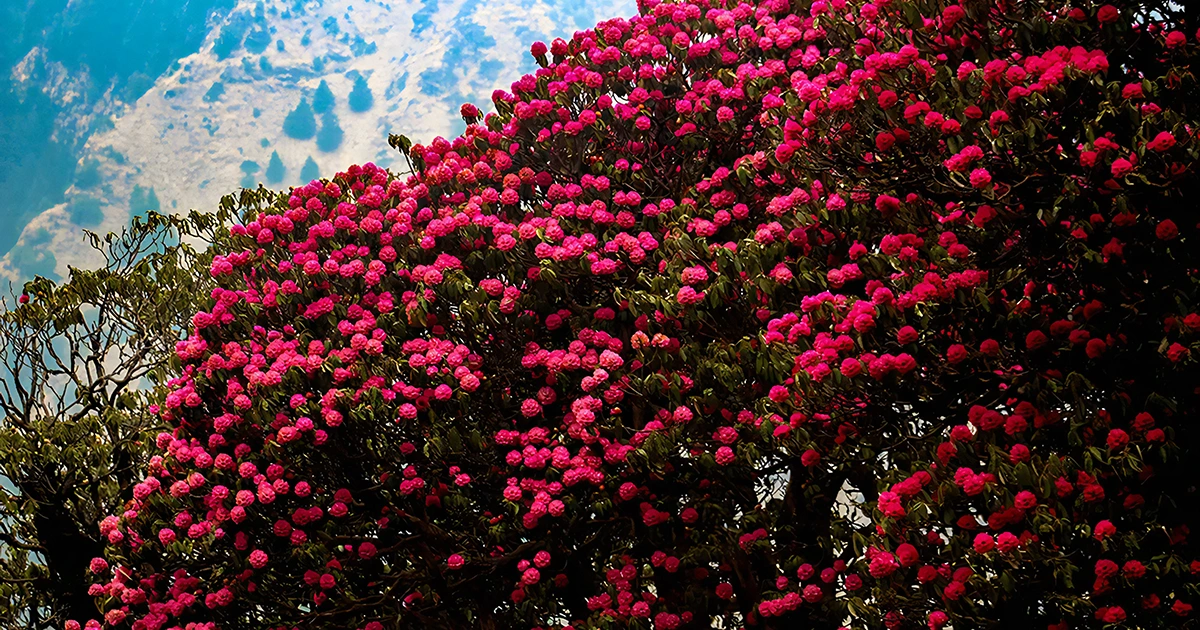
Altitude Sickness Risk
There is a Lower risk of altitude sickness in Annapurna Base Camp due to its moderate elevation of 4,130m. However, there is a higher risk of altitude sickness as the MBC trek reaches Larkya La Pass at 5,160m, requiring proper acclimatization.

Trekkers prone to altitude sickness may find ABC more suitable, while those prepared for higher altitudes will enjoy the challenge of Manaslu.
Our Verdict: Which Trek is Best for You?
Annapurna Base Camp is ideal for those seeking a moderate, picturesque trek with well-equipped teahouses and convenient access. On the other hand, Manaslu Trek is perfect for adventurers looking for a more demanding, off-the-beaten-path experience with fewer tourists and a deep immersion into Tibetan culture.
Both treks promise unforgettable Himalayan adventures. If you’re ready to start your journey, Awesome Holidays Nepal can assist in planning your dream trek.
Reach out to us today to book your adventure to Annapurna Trek or Manaslu Trek!
FAQs
Expand All1. Which trek is easier, Annapurna Base Camp or Manaslu Base Camp?
The Annapurna Base Camp trek is generally considered easier and more accessible, with well-maintained trails and comfortable teahouses.
The Manaslu Base Camp trek is more challenging, with remote trails, basic accommodations, and higher altitudes, making it better suited for experienced trekkers.
Do I need a permit for these treks?
Yes, both treks require permits. For Annapurna Base Camp, you need the Annapurna Conservation Area Permit (ACAP) and a Trekkers’ Information Management System (TIMS) card.
For Manaslu Base Camp, you need a Restricted Area Permit (RAP), a Manaslu Conservation Area Permit (MCAP), and an Annapurna Conservation Area Permit (ACAP) if your route overlaps.
What is the best time to trek to Annapurna Base Camp and Manaslu Base Camp?
The best time for both treks is during the spring (March to May) and autumn (September to November) seasons. These months offer stable weather, clear skies, and optimal trekking conditions.
How long do these treks take?
The Annapurna Base Camp trek typically takes 7–12 days, depending on the route and pace. The Manaslu Base Camp trek usually takes 12–16 days due to its remote location and longer distances.
What kind of accommodation can I expect?
On the Annapurna Base Camp trek, you’ll find comfortable teahouses with basic amenities like shared bathrooms, hot showers, and Wi-Fi (sometimes at an extra cost).
On the Manaslu Base Camp trek, accommodations are more basic, with fewer amenities and simpler teahouses or homestays.
Is altitude sickness a concern on these treks?
Yes, altitude sickness can be a concern on both treks, as they reach high elevations. Proper acclimatization, staying hydrated, and ascending slowly are essential to minimize risks. Manaslu Base Camp reaches higher altitudes, so extra caution is advised.
What is the food like on these treks?
On the Annapurna Base Camp trek, you’ll find a variety of food options, including Nepali dishes like dal bhat and international cuisines like pasta and pizza.
On the Manaslu Base Camp trek, food options are more limited, with a focus on traditional Nepali meals due to the remote location.
Which trek is more crowded?
The Annapurna Base Camp trek is more popular and can be crowded, especially during peak seasons. The Manaslu Base Camp trek is less traveled, offering a quieter and more secluded experience.
Can I do these treks independently?
The Annapurna Base Camp trek can be done independently, as the trails are well-marked and teahouses are abundant.
However, the Manaslu Base Camp trek requires a licensed guide and at least two trekkers, as it is a restricted area.
How long does the Manaslu Circuit trek take?
The Manaslu Circuit trek typically takes 12–16 days, depending on the route and pace.
What kind of accommodation is available in Annapurna Base Camp Trek?
Accommodation on the Annapurna Base Camp trek includes comfortable teahouses with basic amenities like shared bathrooms, hot showers, and Wi-Fi (sometimes at an extra cost).
Which trek has a higher risk of altitude sickness?
The Manaslu Circuit trek has a higher risk of altitude sickness due to its higher elevations and more remote trails.
What is the height of Mount Annapurna-I ?
The height of Mount Annapurna-I is 8,091 m from the sea level.
Related blog posts
Discover a choice of tourist destinations loved by most of our visitors. Whether you're on a jungle safari to spot rare animals or walking through a world heritage site, these well-planned itineraries cover the major highlights of Nepal.


